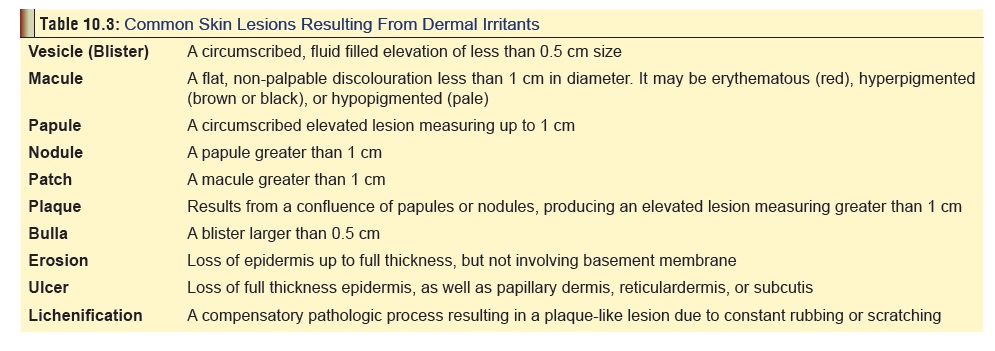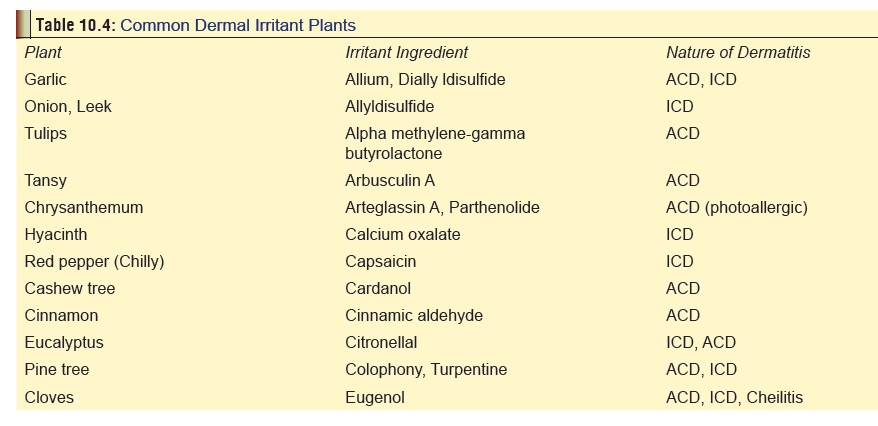Chapter: Modern Medical Toxicology: Organic Poisons (Toxins): Irritant Plants
Dermal Irritant Plants
Dermal Irritant Plants
These plants mainly act as irritants
on skin contact, with resultant inflammation. Among the sensitising plants
which induce plant dermatitis, the Compositae, the largest family of flowering
plants are frequently found in homes and gardens. Severe eruptions are commonly
associated with the highly sensitising plants of the genus Toxicodendron
(Poison ivy, Poison oak, Poison sumac). Related species of Anacardiaceae
(Lacquer tree, Ginkgo fruit tree, Marking nut tree, Cashew, and Mango) can also
produce dermatitis. Some plants (Parsnip, Lime, Wild carrot) can cause
photodermatitis, manifesting as erythema, blisters, or hypopig-mentation, on
exposure to ultraviolet A light.
Table 10.3 lists
a glossary of common skin lesions associ-ated with plant toxicity. Table 10.4 lists some plants that cause
dermatitis.


Treatment of Contact Dermatitis
·
Topical
corticosteroids—corticosteroid ointments with few or no additives are preferred.
Optimal frequency of applica-tion is twice a day.
·
For acute or weeping lesions, saline
or aluminium subac-etate compresses can be applied 3 to 4 times a day to dry
the skin.
·
Itching can be relieved by oral
antihistamines and lotions with menthol (0.25 to 0.5%).
·
Oral corticosteroids may be required
in addition to high-potency local applications for widespread eruptions (e.g.
poison ivy dermatitis). Tapering the oral dose is necessary. Long-term local
applications of corticosteroids must be avoided, since that may lead to
atrophy, striae, purpura, folliculitis, and telengiectasiae.
·
Prevention of irritant and allergic
contact dermatitis may be attempted with barrier creams.
·
Photosensitive reactions can be
treated with antihistamines, topical antipruritic agents, topical
corticosteroids, and compresses. Rarely, systemic corticosteroids may be
required.
Related Topics